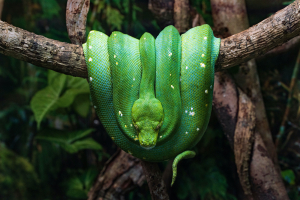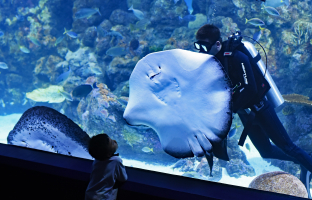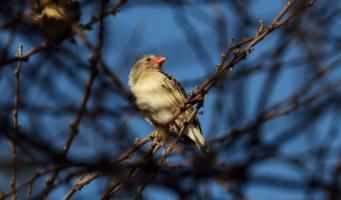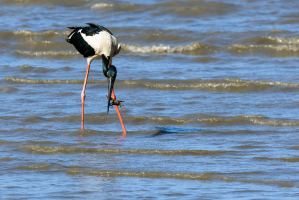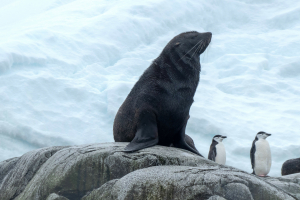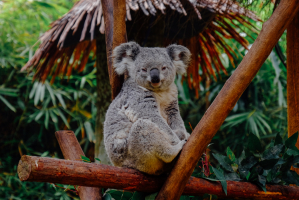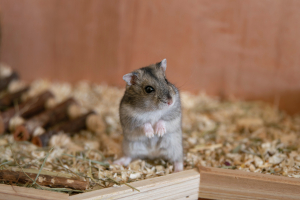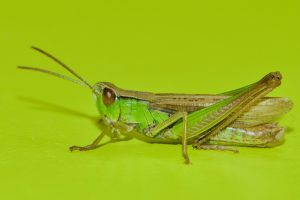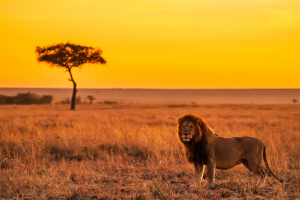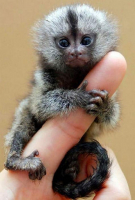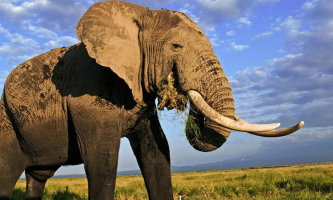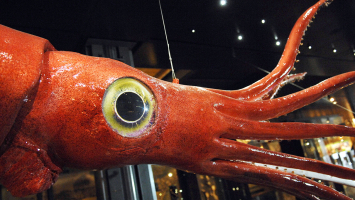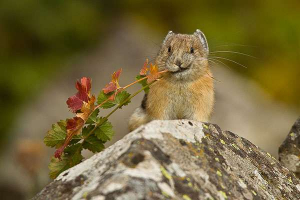Top 15 Common Animals That Start With "O"
In the vast tapestry of the animal kingdom, several remarkable creatures share a common bond - they all start with the letter "O." From the oceans to the ... read more...skies, these animals bring diversity, intrigue, and ecological significance to the natural world. Let's explore some common animals that grace our planet and proudly bear the letter "O" in their names.
-
The octopus, a remarkable marine creature belonging to the cephalopod class, is a marvel of evolutionary ingenuity and adaptability. With its distinctive appearance, intelligence, and unique abilities, the octopus captures the fascination of scientists, marine enthusiasts, and casual observers alike.
One of the most striking features of the octopus is its appearance. Possessing a soft, gelatinous body and bulbous head, it is characterized by a bulbous mantle and large, expressive eyes. The octopus is renowned for its incredible ability to change color and texture, allowing it to blend seamlessly with its surroundings. This remarkable camouflage is achieved through specialized cells called chromatophores, which enable the octopus to alter the pigments in its skin rapidly. Such adaptability not only serves as a means of defense against predators but also aids in hunting and communication.
The octopus is renowned for its high level of intelligence, comparable to that of certain vertebrates. Studies have revealed advanced problem-solving skills, learning abilities, and even a form of short-term memory in these cephalopods. The octopus's brain, while distributed throughout its body, exhibits a sophisticated structure, with a larger proportion of neurons located in its arms. This decentralized nervous system contributes to the octopus's ability to perform complex tasks and coordinate its movements with remarkable precision.
Beyond its intellectual prowess, the octopus possesses a range of fascinating abilities. Its highly flexible arms, equipped with suckers lined with taste receptors, serve multiple functions. From capturing prey to manipulating objects, these appendages are a testament to the octopus's adaptability. Some species of octopuses are known to use tools, such as coconut shells or discarded debris, for shelter or as defensive barricades.
Reproduction in octopuses is a brief yet intriguing process. Females invest considerable energy in laying and guarding their eggs, a period during which they often refrain from feeding and may even experience a decline in health. Once the eggs hatch, the octopus parents display remarkable dedication to protecting and caring for their offspring. This parental care is uncommon in the marine world and adds another layer to the complexity of octopus behavior.
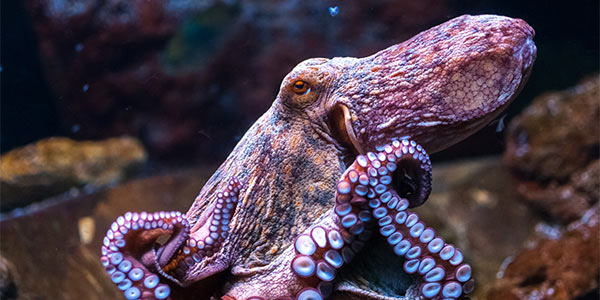
nwf.org Video by Nat Geo WILD -
The oyster, a bivalve mollusk that has played a crucial role in human history and gastronomy, is a fascinating creature with a simple yet elegant existence. Found in both saltwater and freshwater environments, oysters are renowned for their distinctive shell structure, filter-feeding lifestyle, and culinary significance.
The most recognizable feature of the oyster is its shell, a hard, protective structure comprised of two hinged valves. These shells, often irregularly shaped, come in various sizes and colors, depending on the species and environmental factors. Oysters are filter feeders, drawing in water through their gills and extracting plankton and other microscopic particles for nourishment. This unique feeding mechanism not only sustains the oyster but also contributes to the improvement of water quality, as they filter impurities during the process.
Beyond their ecological role, oysters have been integral to human cultures for centuries. Archaeological evidence suggests that oysters were consumed by prehistoric coastal communities, showcasing their historical significance as a food source. Throughout history, oysters have been associated with luxury and indulgence, often enjoyed by royalty and the upper echelons of society. Their popularity has endured, and today, oysters are a staple in many seafood cuisines worldwide.
Oyster farming, or aquaculture, has become a significant industry to meet the demand for these delectable mollusks. Oyster farms carefully cultivate oysters in controlled environments, managing factors like water quality, temperature, and nutrition to optimize growth and flavor. This sustainable practice not only supports the seafood industry but also aids in the restoration of coastal ecosystems by providing habitat and promoting water filtration.
Apart from their culinary importance, oysters are recognized for their ecological benefits. Oyster reefs, formed by clusters of oysters growing together, serve as natural barriers that protect coastlines from erosion and storm surges. Additionally, these reefs create diverse habitats for various marine species, contributing to the overall biodiversity of coastal ecosystems.
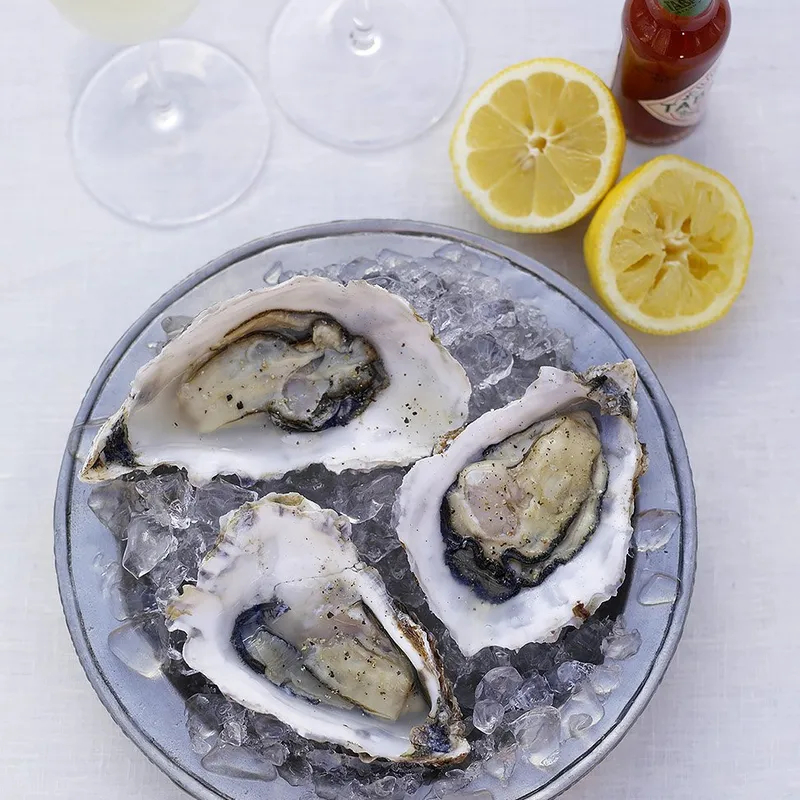
jamieoliver.com Video by Deep Marine Scenes -
The okapi, an elusive and enigmatic creature native to the dense forests of the Democratic Republic of Congo in Central Africa, is a unique member of the giraffe family. Despite its zebra-like stripes and horse-like appearance, the okapi is more closely related to the giraffe than any other living species. Known scientifically as Okapia johnstoni, this solitary and reclusive mammal has captured the imaginations of scientists and wildlife enthusiasts alike.
One of the most distinctive features of the okapi is its striking coat pattern. The okapi's hindquarters and legs are adorned with bold black-and-white stripes, resembling those of a zebra. This camouflage is thought to be an adaptation to its forested habitat, providing effective cover amidst the dappled sunlight and shadows. In contrast, the okapi's upper body is a rich, reddish-brown color. This unique combination of colors and patterns aids the okapi in staying hidden from predators and facilitating solitary living in the dense vegetation of the Ituri Rainforest.
The okapi's physical characteristics also include a long neck and large, flexible ears. While its neck is not as elongated as that of its giraffe relatives, the okapi's extended tongue, reaching up to 18 inches, is a crucial adaptation for reaching leaves in the upper canopy of the forest. The okapi's tongue is prehensile and, along with its upper lip, allows the animal to strip leaves from branches with precision.
Given its elusive nature, the okapi remained unknown to the Western world until the early 20th century. British explorer and naturalist Sir Harry Johnston played a key role in its discovery and subsequent scientific classification. The okapi's shy and solitary behavior, coupled with its ability to navigate the dense forests with ease, contributed to its elusive status.
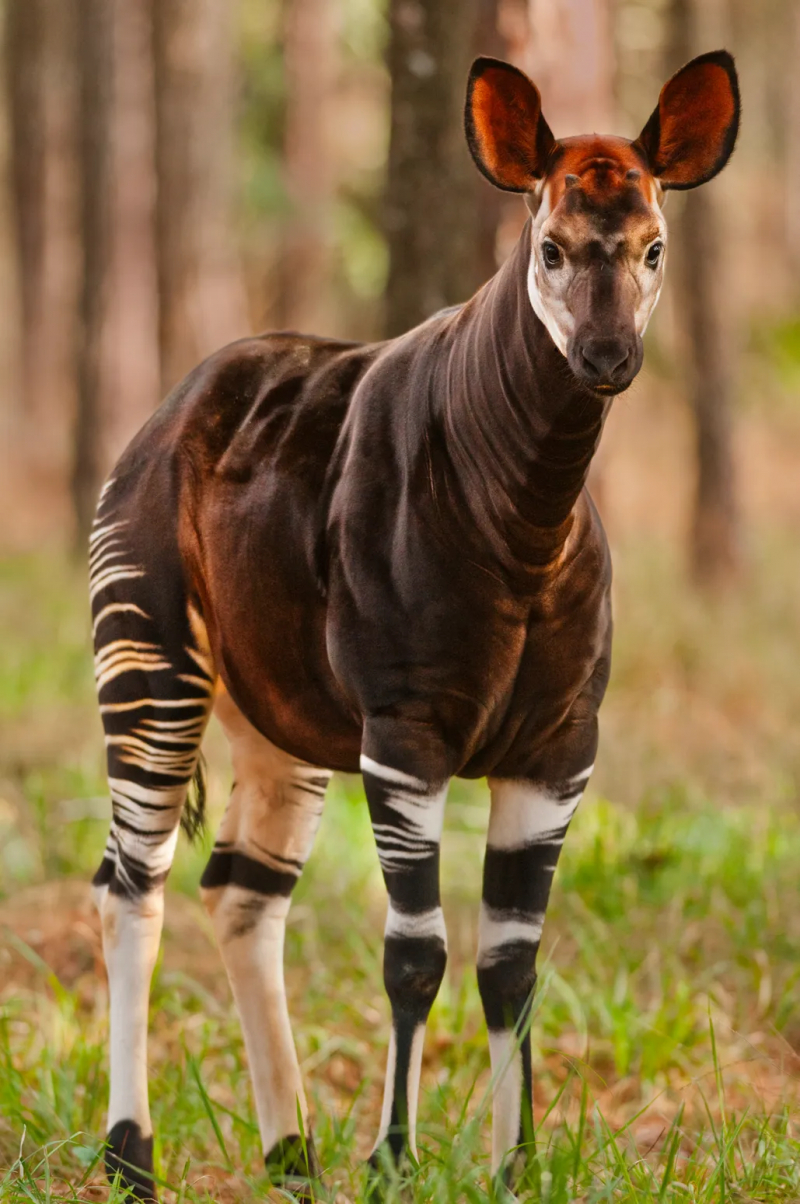
discoverwildlife.com Video by Brut America -
On the list of common animals that start with "O", the opossum is a fascinating marsupial that has adapted to diverse environments across the Americas. Characterized by its rat-like appearance, prehensile tail, and unique reproductive characteristics, the opossum holds a distinctive place in the animal kingdom.
The opossum belongs to the order Didelphimorphia and is the only marsupial native to North America. Its most recognizable feature is the prehensile tail, which serves multiple functions. The tail aids in climbing, balancing, and even carrying nesting materials. Unlike many other marsupials, the opossum lacks a pouch; instead, it carries and nurses its young in a fur-lined abdominal pocket.
Opossums are renowned for their remarkable adaptability. They can thrive in a variety of environments, from dense forests to urban areas. This adaptability is reflected in their eclectic diet, which includes insects, fruits, small mammals, and even carrion. Opossums are opportunistic feeders, capable of consuming a wide range of food sources, making them valuable members of ecosystems as scavengers.
One of the opossum's most intriguing features is its reproductive strategy. Females typically give birth to a large number of relatively undeveloped young, known as joeys, which are about the size of a lima bean. These tiny joeys must crawl to the mother's pouch, where they continue to develop and nurse. The mother carries them in her pouch for an extended period before they eventually cling to her back, becoming more independent.
The opossum's defensive mechanisms contribute to its survival in the wild. When threatened, an opossum may exhibit a defensive behavior called "playing possum." In this state, the opossum falls limp, drools, and emits a foul-smelling odor, giving the appearance of death. This remarkable act serves as a deterrent to potential predators, as many creatures prefer fresh prey.
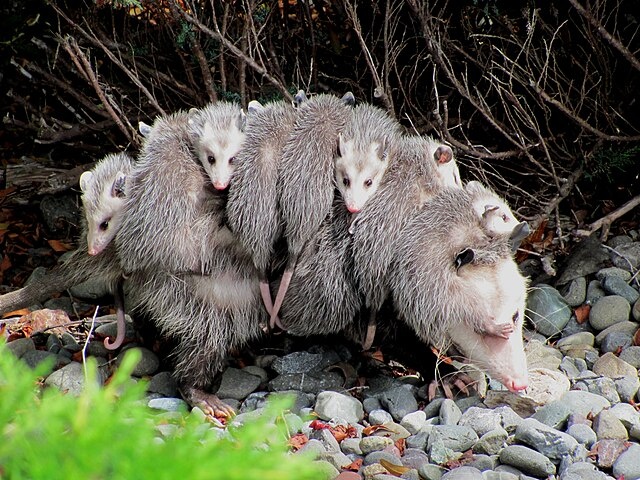
en.wikipedia.org Video by The Dodo -
The olm, scientifically known as Proteus anguinus, is a fascinating and enigmatic aquatic salamander that inhabits the subterranean waters of the Dinaric Karst region in Southeastern Europe. Often referred to as the "human fish" due to its fleshy, pinkish-white appearance, the olm has captivated scientists and enthusiasts alike with its unique characteristics and adaptations to its underground habitat.
One of the most remarkable features of the olm is its longevity. With a lifespan that can exceed a century, the olm holds the title of one of the longest-living salamanders. This exceptional longevity can be attributed to its slow metabolic rate and the absence of predators in its dark, subterranean environment. The olm's ability to survive for such extended periods without food further emphasizes its adaptation to life in the dark depths of caves and underground rivers.
The olm is also known for its remarkable reproductive biology. Unlike most amphibians, olms do not undergo metamorphosis from larvae to adults; instead, they retain their juvenile characteristics throughout their lives. These neotenic features include external gills, a slender body, and undeveloped eyes covered by a layer of skin. Reproduction in olms is a complex process, involving intricate courtship behaviors and internal fertilization. The female olm can lay a relatively small number of eggs, and the parental care displayed by both male and female olms is a unique aspect of their reproductive strategy.
Due to its subterranean lifestyle, the olm has evolved specialized sensory adaptations. With its eyes reduced to small, rudimentary structures beneath the skin, olms primarily rely on other sensory mechanisms, such as a well-developed sense of smell and electrosensitivity, to navigate their lightless environment and locate prey. These adaptations underscore the olm's remarkable ability to thrive in conditions where many other species would struggle to survive.
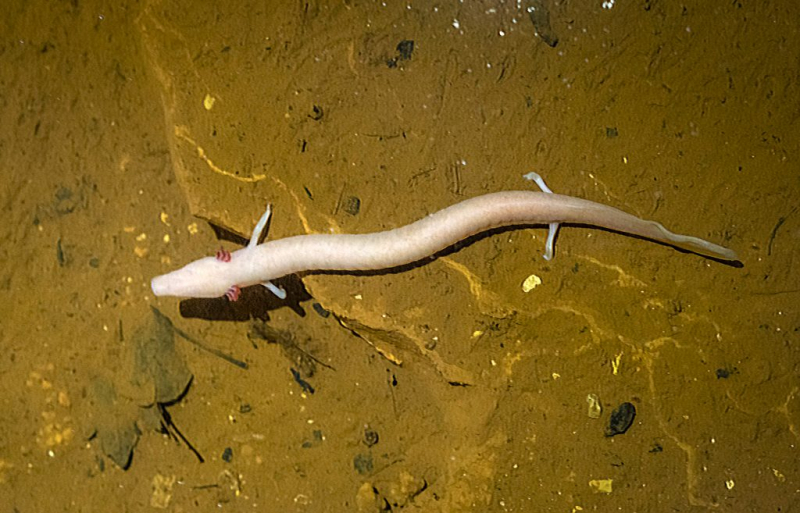
myolm360.com Video by Smithsonian Channel -
The orca, or killer whale (Orcinus orca), is one of the most iconic and intelligent marine mammals, captivating human fascination with its distinctive black and white markings and highly social behavior. As the largest member of the dolphin family, the orca is renowned for its complex social structures, exceptional hunting skills, and wide distribution across oceans.
Orca populations are found in both polar and tropical waters, demonstrating their adaptability to various climates and environments. With a diverse diet that includes fish, squid, seals, sea lions, and even other whales, orcas are apex predators and exhibit remarkable cooperative hunting techniques. Different populations have developed unique hunting strategies, showcasing the cultural diversity among orca groups. Some specialize in herding fish, while others are known for their sophisticated techniques in capturing marine mammals.
A defining characteristic of orcas is their strong social bonds. They live in matrilineal family groups called pods, led by an older female known as the matriarch. These pods consist of her offspring and can include multiple generations, fostering a sense of community and cooperation. The bonds within pods are so strong that individuals rely on each other for hunting, protection, and social interaction. Communication among orcas is intricate and involves a repertoire of clicks, whistles, and pulsed calls that contribute to their sophisticated language and echo-location abilities.
In captivity, orcas have been a subject of controversy due to concerns about their welfare in confined environments like marine parks. Documentaries such as "Blackfish" have shed light on the physical and psychological challenges faced by orcas in captivity, sparking debates about the ethical implications of keeping these intelligent and wide-ranging animals in enclosed spaces.

kids.nationalgeographic.com Video by Real Science -
The oribi (Ourebia ourebi) is a small and graceful antelope species found in various regions of sub-Saharan Africa. Known for its slender build, distinctive coloration, and agile movements, the oribi is a captivating species that inhabits grasslands, savannas, and open plains.
Physically, the oribi is characterized by its reddish-brown coat, which provides effective camouflage in its natural grassy habitats. The coat is marked with a white belly and underparts, and both males and females typically have slender, straight horns that are only present in adulthood. The horns, found in both sexes, can reach lengths of around 20 to 30 centimeters (8 to 12 inches) and are used more for defense against predators and establishing dominance within their social structure than for actual combat.
One of the notable features of the oribi is its exceptional agility and speed. With a nimble build and long, slender legs, oribis are well-adapted for swift movements through tall grasses, allowing them to evade predators such as lions, leopards, and wild dogs. Their keen sense of hearing and sharp eyesight further contribute to their ability to detect potential threats in their surroundings.
Oribis are predominantly grazers, feeding on a diet of grasses and occasionally supplementing it with herbs and shrubs. Their feeding habits are adapted to their grassland habitats, where they use their finely tuned senses to locate and consume a variety of plant species. This specialized diet allows them to thrive in open grassy areas where they can find an abundance of suitable vegetation.
In terms of social structure, oribis are known to form small family groups or pairs. While they may exhibit territorial behaviors, they are generally less aggressive than some other antelope species. Male oribis may engage in territorial displays, marking their territory with urine and dung to establish dominance and attract potential mates.
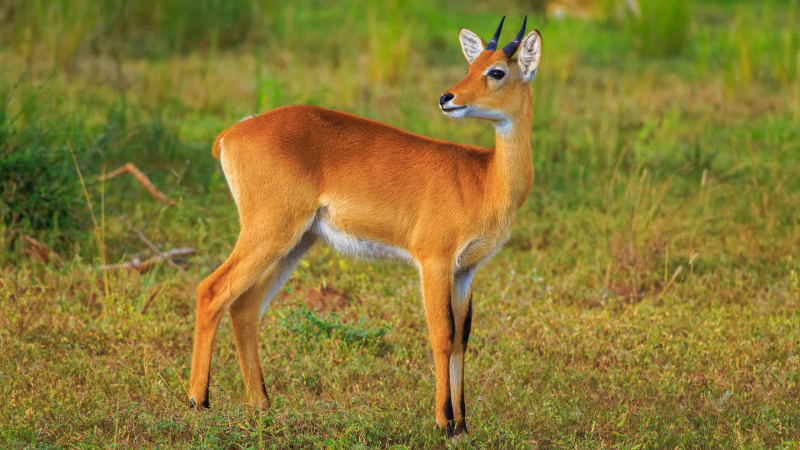
a-z-animals.com Video by Babanango Game Reserve -
Orioles are a family of colorful and melodious birds belonging to the family Oriolidae. These striking avian creatures are known for their vibrant plumage, melodic songs, and diverse habitats, contributing to their widespread appeal among birdwatchers and nature enthusiasts.
Distributed across various regions of the world, including Asia, Africa, Europe, and the Americas, orioles exhibit a stunning array of colors. Their plumage often features vibrant hues of orange, yellow, and black, creating a visually striking contrast. The male orioles, in particular, tend to display more vivid colors than their female counterparts, and these bright hues are not only aesthetically pleasing but also serve as a means of attracting mates.
One of the most iconic species is the Baltimore Oriole (Icterus galbula), found in North America. The male Baltimore Oriole boasts striking orange and black plumage, resembling the colors of the coat of arms of Lord Baltimore, which inspired its name. Orioles are not only visually appealing but are also known for their intricate and melodious songs. Their vocalizations include a series of whistles, chirps, and flute-like notes, showcasing their proficiency in both mimicking other bird species and creating their unique tunes. These songs are an integral part of their communication, used for territory establishment, courtship, and maintaining social bonds within the flock.
Orioles are primarily arboreal, inhabiting diverse ecosystems ranging from forests and woodlands to gardens and orchards. They are skilled foragers, feeding on a varied diet that includes nectar, fruits, insects, and spiders. Some species are known for their ability to extract nectar from flowers using their specialized bills, contributing to the pollination of flowering plants in their habitats.
Migration is a notable behavior observed in many oriole species. The Baltimore Oriole, for example, undertakes an impressive journey between its breeding grounds in North America and wintering grounds in Central America and northern South America. This migratory behavior allows orioles to capitalize on seasonal changes in food availability and weather conditions.
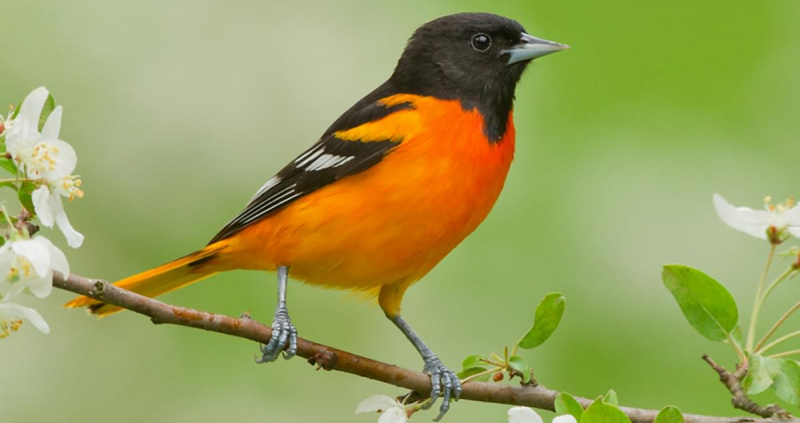
allaboutbirds.org Video by Lesley the Bird Nerd -
The oryx, also known as gemsbok in some regions, is an iconic and striking antelope species belonging to the genus Oryx. These majestic animals are native to arid and semi-arid regions of Africa, particularly the Kalahari and Namib deserts. Known for their distinctive long, straight horns and elegant appearance, oryx have become symbolic representations of resilience and adaptation in harsh environments.
One of the defining features of the oryx is its remarkable adaptation to arid habitats. They possess the ability to survive for extended periods without water, obtaining much of their moisture from the vegetation they consume. Their physiological adaptations include efficient water conservation mechanisms, such as the ability to concentrate their urine and limit water loss through sweating. This allows oryx to thrive in environments where water sources may be scarce and irregular.
The oryx's physical appearance is characterized by a striking contrast of colors. Their coats are typically a pale gray to light brown, providing effective heat reflection in the intense desert sun. A distinct black stripe runs along the side of their face, leading down to their muzzle, which helps reduce glare from the sun and enhances their vision. The contrasting colors and markings contribute to their overall striking and regal appearance.
One of the most noticeable features of the oryx is its long, straight horns, which are present in both males and females. These formidable horns can reach lengths of up to 33 inches (84 cm) and are used for defense against predators, as well as in territorial disputes and displays of dominance within their social groups. The oryx's ability to use its horns effectively in self-defense is an important factor in their survival in the wild.
Oryx are social animals and tend to form herds, particularly during periods of food scarcity or in the face of external threats. These herds are often composed of females and their offspring, with males sometimes forming smaller bachelor groups. Their social structure allows for cooperative behaviors, such as group vigilance against predators and shared knowledge of water sources.
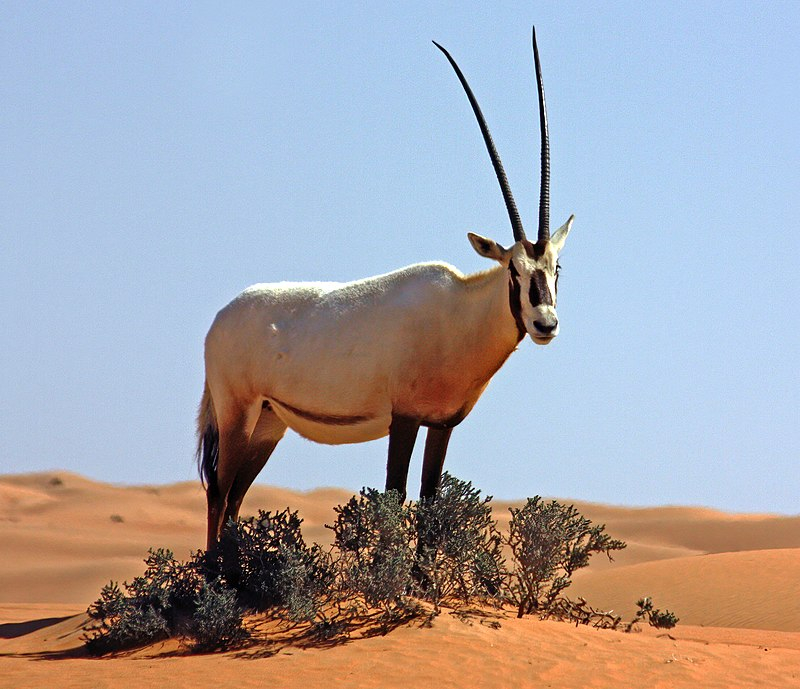
en.wikipedia.org Video by Arab News -
Ostracods, commonly referred to as seed shrimp or mussel shrimp, are a diverse and fascinating group of small crustaceans belonging to the class Ostracoda. These minute aquatic organisms are found in a wide range of freshwater and marine habitats, including lakes, rivers, ponds, and oceans. Despite their diminutive size, ostracods play significant roles in aquatic ecosystems, and their fossil record provides valuable insights into Earth's history and paleoenvironments.
Ostracods exhibit a unique bivalve-like body structure enclosed within a protective, hinged carapace. This hard, calcareous shell is divided into two valves that encapsulate the entire body, leaving only the appendages and sensory organs exposed. The carapace serves not only as a protective shield against predation but also plays a crucial role in buoyancy regulation and maintaining the organism's shape.
One of the remarkable aspects of ostracods is their incredible diversity, both in terms of species and ecological adaptations. The range of shapes and sizes among ostracods is vast, with some species measuring only a fraction of a millimeter, while others can reach sizes visible to the naked eye. Their adaptive success is evident in their ability to exploit various niches within aquatic ecosystems, from benthic environments to open water habitats.
Ostracods are primarily detritivores or filter-feeders, relying on their specialized appendages to capture small particles, organic matter, and planktonic organisms for food. Their feeding habits contribute to nutrient cycling and help maintain water quality in their respective habitats. In addition to their ecological roles, ostracods are an essential component of aquatic food webs, serving as a food source for various organisms, including fish and waterfowl.
The fossil record of ostracods is particularly valuable for paleontologists and geologists. Ostracod shells are well-preserved in sedimentary rocks, providing a wealth of information about past environments, climate conditions, and ecological changes. By studying fossilized ostracods, researchers can reconstruct ancient ecosystems, track the evolution of different species, and gain insights into Earth's history spanning millions of years.
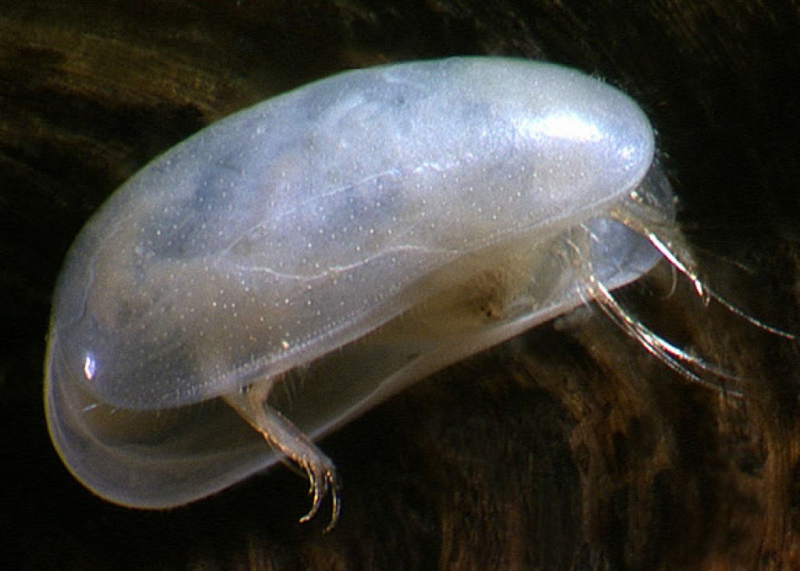
landcareresearch.co.nz Video by Deep Marine Scences -
Otters, belonging to the family Mustelidae, are charismatic and playful semi-aquatic mammals known for their sleek bodies, webbed feet, and playful behaviors. Found in a variety of aquatic habitats, including rivers, lakes, and coastal areas, otters have adapted to a semi-aquatic lifestyle that combines terrestrial and aquatic elements.
One of the most distinctive features of otters is their streamlined body and waterproof fur. Their fur consists of a dense undercoat overlaid by longer guard hairs, which trap a layer of air, providing buoyancy and insulation against the cold water. This adaptation allows otters to maintain their body temperature while swimming and diving for extended periods.
Otters are known for their playful and social behaviors, which include sliding down riverbanks, engaging in water games, and vocalizing with a range of chirps, whistles, and other sounds. These playful activities are not just for amusement; they also serve important purposes, such as strengthening social bonds within family groups and refining essential skills like hunting and grooming.
There are various otter species, and they exhibit diverse habitat preferences and adaptations. The North American river otter (Lontra canadensis), for example, is commonly found in freshwater habitats across North America. The Eurasian otter (Lutra lutra) inhabits a wide range of aquatic environments, including rivers, lakes, and coastal areas, across Europe and Asia. The giant otter (Pteronura brasiliensis), native to South America, is the largest otter species and is known for its sociable behavior and distinctive vocalizations.
Otters are carnivorous predators, primarily feeding on fish, crustaceans, amphibians, and small mammals. Their sharp claws and strong jaws aid in capturing and consuming prey, and they are known for their agility in hunting underwater. Otters play a crucial role in controlling aquatic ecosystems by helping to regulate fish populations, contributing to the overall health of water bodies.
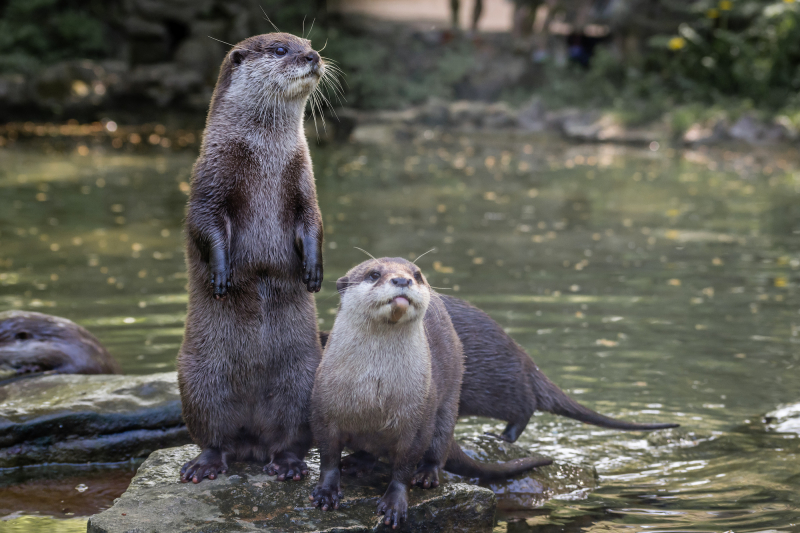
discoverwildlife.com Video by BBC -
Recognized as among the most prevalent animals commencing with the letter "O," Oxen, domesticated cattle belonging to the genus Bos, have been integral to human history and agriculture for millennia. Renowned for their strength, endurance, and gentle temperament, oxen have served as indispensable collaborators in diverse cultures globally. They have offered crucial support in activities such as plowing fields, hauling heavy loads, and serving as a reliable source of milk, meat, and leather.
The term "ox" typically refers to a castrated male bovine used for draft purposes. The castration process not only makes the animals more manageable but also enhances their strength and endurance. Oxen are often associated with yoked pairs working in tandem to perform tasks such as plowing fields, hauling timber, or transporting goods. The use of oxen in agriculture has been a traditional practice in many cultures, contributing significantly to the development of farming communities.
One of the notable characteristics of oxen is their immense physical strength. Their robust build, powerful muscles, and well-developed shoulders make them well-suited for pulling heavy loads. The use of a yoke, a wooden crosspiece fitted on the necks of a pair of oxen, allows them to distribute the weight of the load evenly and work together efficiently. Oxen are particularly well-adapted to perform tasks in challenging terrains where other forms of machinery may be impractical.
Beyond their role as draft animals, oxen have been valued for their versatility. In addition to their use in agriculture, oxen provide other essential resources. They serve as a source of meat, and their hides are utilized for leather production. Additionally, oxen can be milked, providing a steady source of dairy products.
While oxen have been crucial to the development of agriculture and human societies, their role has evolved with advancements in technology. In modern times, tractors and machinery have largely replaced oxen in many industrialized agricultural systems. However, in certain regions and for specific agricultural practices, oxen continue to be employed, especially in small-scale and sustainable farming.
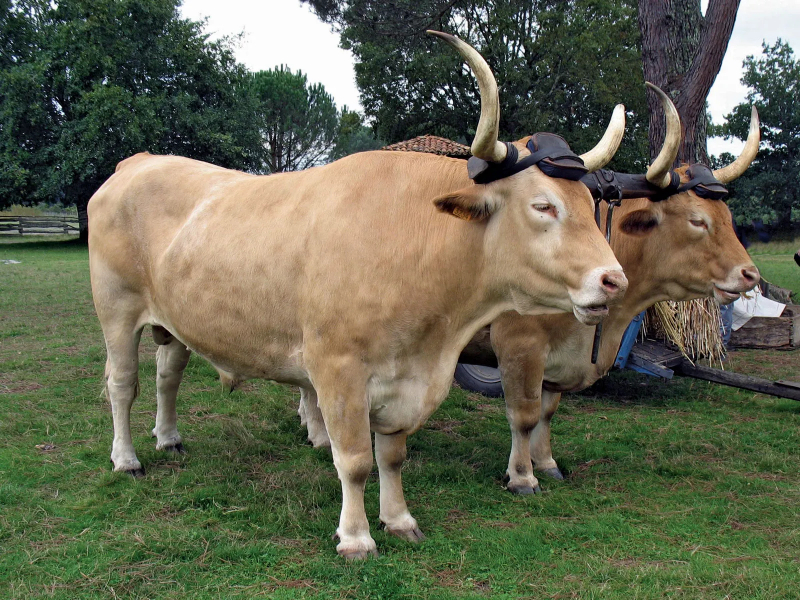
britannica.com Video by TillersInternational -
The Olive Python (Liasis olivaceus), a captivating reptile native to northern and western Australia, stands as a distinctive representative among common animals that start with the letter "O." Renowned for its impressive size, striking coloration, and fascinating behavior, the Olive Python holds a unique place in the diverse fauna of Australia.
As one of the largest snake species on the continent, the Olive Python can attain lengths of over four meters (around 13 feet). Its robust body, characterized by shades of olive, brown, and yellow, exhibits a glossy sheen, contributing to its name. The distinctive coloration serves as effective camouflage within its natural habitats, which include a range of environments from woodlands and grasslands to rocky outcrops.
The Olive Python is renowned for its adaptability, occupying diverse ecosystems across northern and western Australia. Its presence has been documented in arid regions, dense woodlands, and even areas adjacent to human settlements. This versatility highlights the snake's ability to thrive in various conditions, from the harsh Australian outback to more vegetated landscapes.
In terms of behavior, Olive Pythons are primarily nocturnal hunters. Their diet encompasses a variety of prey, including mammals, birds, and other reptiles. With their powerful constriction abilities, they capture and subdue their prey before consuming it whole. Despite their considerable size, Olive Pythons are generally non-venomous, relying on their strength and impressive hunting skills to secure food.
The reproductive strategy of the Olive Python is noteworthy. These snakes are oviparous, meaning they lay eggs. The female python selects a suitable location, such as a concealed burrow or rocky crevice, to deposit her clutch of eggs. After an incubation period, the hatchlings emerge, equipped with the instinctive behaviors needed for survival. This reproductive strategy is crucial for the snake's ability to perpetuate its species in the diverse landscapes it inhabits.
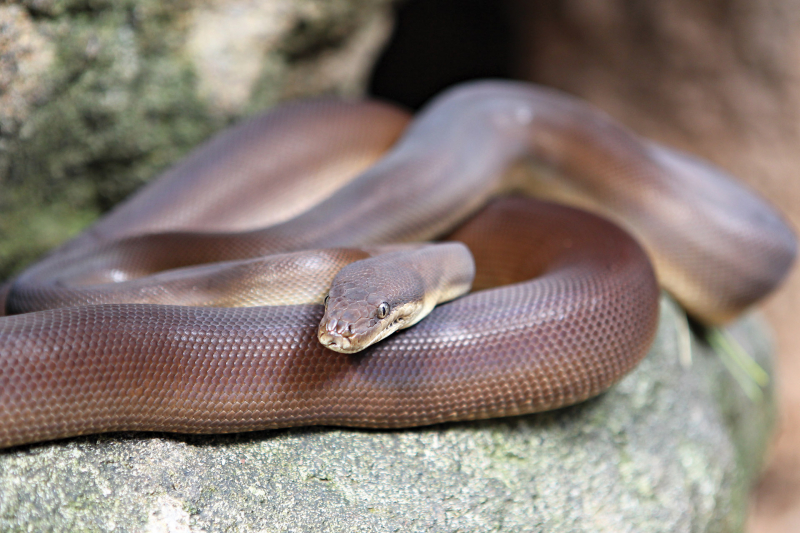
perthzoo.wa.gov.au Video by Beaches Scaly Beasts -
Owls, captivating nocturnal birds of prey, are iconic members of the avian world known for their unique features and enigmatic behaviors. Spread across diverse ecosystems globally, these silent and efficient hunters have long fascinated humans with their distinctive appearance, haunting calls, and exceptional adaptations for nighttime predation.
Characterized by large, forward-facing eyes, a flat facial disc, and powerful talons, owls are well-adapted for their predatory lifestyle. Their exceptional vision allows them to navigate and hunt in low-light conditions, and their facial discs aid in channeling sound towards their ears, enhancing their ability to locate prey through echolocation. With keen hearing, sharp talons, and a silent flight facilitated by specialized feathers, owls are formidable nocturnal predators.
Owls exhibit a diverse range of sizes, with the smallest species, such as the Elf Owl, measuring around six inches in length, while larger species like the Eurasian Eagle Owl can have wingspans exceeding six feet. Their plumage varies in color and pattern, providing effective camouflage in their respective habitats. The owl's cryptic appearance, combined with its nocturnal habits, makes it a master of stealth in hunting a wide array of prey, including rodents, insects, small mammals, and other birds.
One of the most iconic aspects of owls is their haunting vocalizations. Each species has its distinctive calls, ranging from the deep hoots of the Great Horned Owl to the eerie screeches of the Barn Owl. These calls serve various purposes, including territorial communication, mate attraction, and establishing dominance within their territories.
Owls hold significant cultural and symbolic value in different societies. In many cultures, owls are associated with wisdom, mystery, and intuition. However, superstitions and folklore have also attributed negative connotations to these birds, associating them with omens or supernatural events.
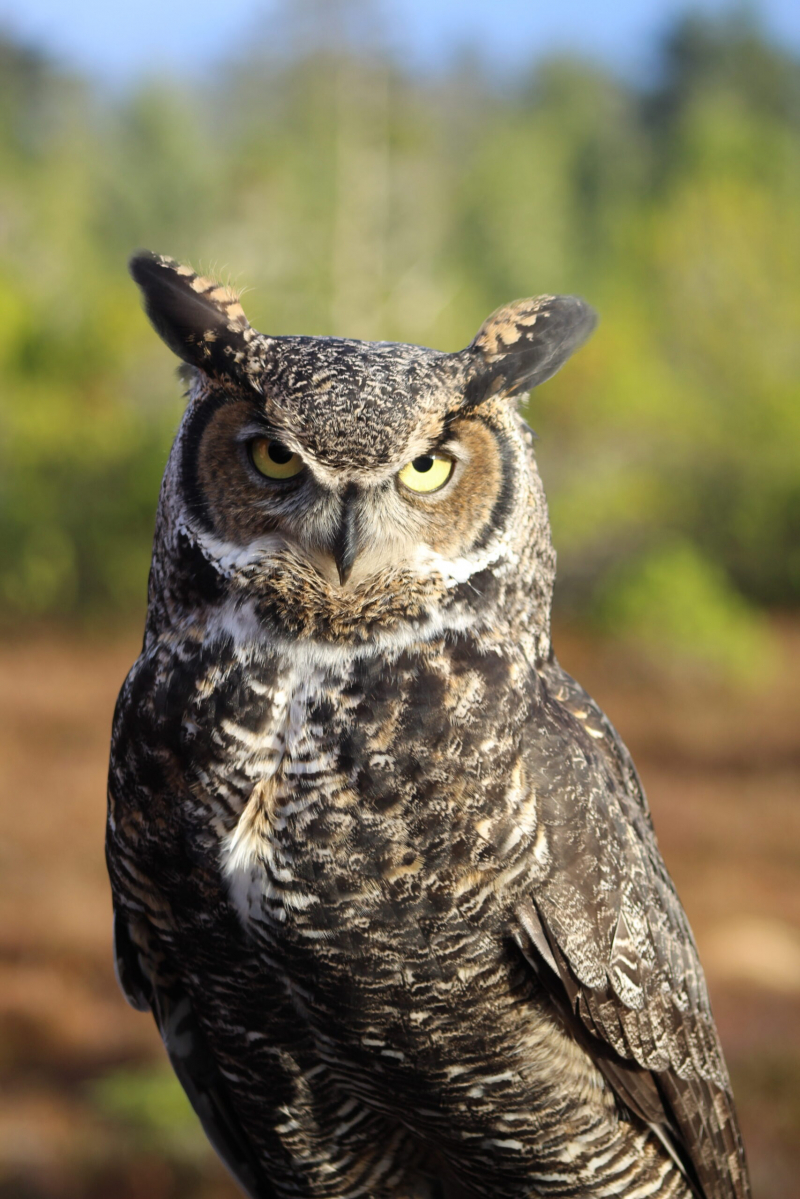
alaskaraptor.org Video by MashupZone -
The ostrich (Struthio camelus) stands as a unique and remarkable bird, holding the title of the largest and heaviest living bird on Earth. Native to Africa, the ostrich's distinctive characteristics, impressive adaptations, and significance in both the animal kingdom and human history make it a fascinating subject of study.
The ostrich's most notable feature is its size, with adult males standing up to nine feet tall and weighing between 220 to 290 pounds, while females are slightly smaller. Their long legs and powerful thighs contribute to their remarkable speed, making them the fastest-running bird, capable of reaching speeds up to 45 miles per hour. These adaptations have evolved as part of their defense mechanism, allowing them to escape predators in their natural habitats.
Ostriches are characterized by their flightlessness, a trait that sets them apart from most bird species. Instead of relying on flight, ostriches have strong, well-developed legs that enable them to cover large distances on foot. Their powerful legs are not only used for running but also serve as effective weapons for self-defense. Each foot has two toes, with a powerful claw that can be used in a swift, forward kick.
The ostrich's plumage is distinct, featuring a mix of black and white feathers that provide effective camouflage in their native savannas and deserts. Their long necks and small heads contribute to their overall unique appearance. The male ostrich displays more vibrant black and white plumage, while the female's feathers are typically brownish-gray. During courtship displays, males engage in vibrant dances and showcase their plumage to attract mates.
Ostriches are primarily herbivores, feeding on a diet that includes grasses, seeds, and small plants. Despite their large size, they have a specialized digestive system that allows them to extract nutrients from a variety of vegetation. Ostriches are also known to ingest small stones and pebbles, a behavior known as gastroliths, which aids in the mechanical breakdown of their food in the digestive tract.
Humans have interacted with ostriches for centuries, not only as a source of food and materials but also for their feathers, which have been used for decorative purposes. In some cultures, ostrich eggs are valued for their size and strength, often used for ornamental or practical purposes.
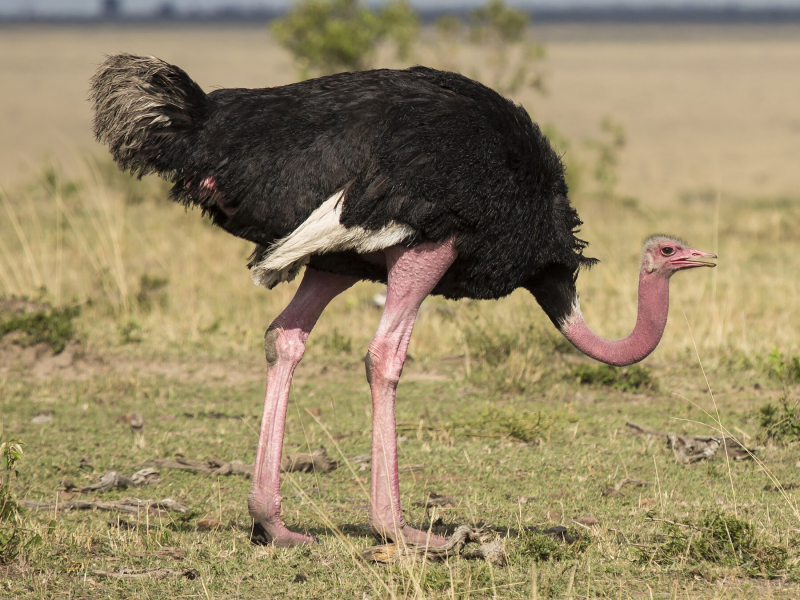
ebird.org Video by BBC Earth

















